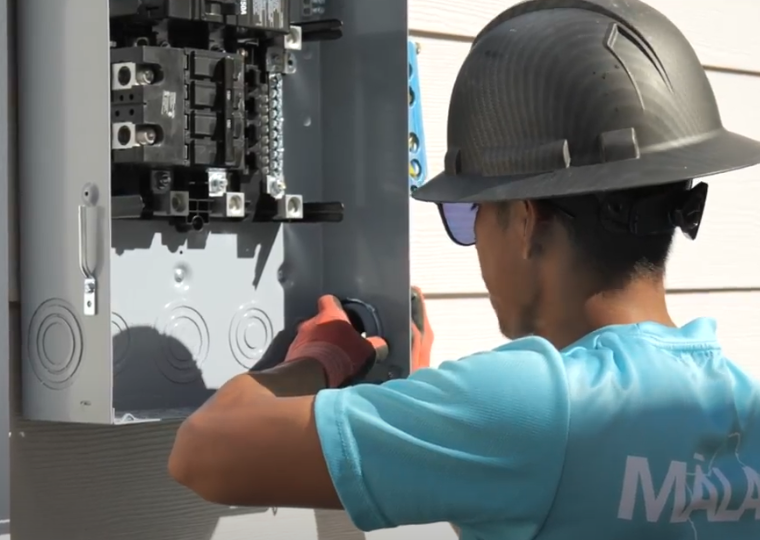How do solar panels work?
It might be a question that you never stopped to think about before, but how do solar panels work? The short answer is of course that solar panels take in energy from the sun, converting it to usable electricity. The long answer is more complicated, but we’ll try to keep it simple. It all starts with a solar cell.
Solar cells
If you remember your high school science classes, electricity is generated by the flow of electrons in a certain direction. Solar cells can be made of many different materials but for the most part, PV systems are built of cells that consist of two thin layers of silicon. One layer is doped with boron and the other is doped with phosphorus. That creates a positively-charged layer and a negatively-charged layer. The positively-charged layer has extra holes or spaces for electrons to attach, and the negatively-charged layer has extra electrons.
When sunlight leaves the sun, travels the 93 million miles through space and then hits a solar panel, it acts like a bunch of tiny particles, or photons. When a photon hits (or “excites”) an electron on the surface of the solar cell, it knocks it loose. The electron that was knocked loose rises to the surface of the solar panel to be collected by a grid of conductive metal on the surface called fingers, which conduct and direct the flow of electricity towards the wires. The electron leaves a hole where it was, so in its place an electron rises from the bottom layer, leaving another hole in its place, since the charge of each of the layers must stay constant. This flow of electrons generates direct current electricity.
This process isn’t 100% efficient, meaning not all of the energy that strikes the panel gets converted into usable electricity. In fact, most home PV systems are only between 15% and 20% efficient. But the good news is that’s usually enough!
The PV system
One solar cell produces a tiny amount of electricity, so they have to be arranged with lots of others. Solar panels themselves consist of lots of solar modules, which consist of arrays of many solar cells. All these cells, modules, and panels are attached to each other to form a current in a way that optimizes the flow of electricity. From the solar panel, the electricity flows to an inverter which converts the direct current to alternating current, which is what most of your household appliances use.
If you don’t use all the energy that’s being generated by your solar panels, your system usually will have a battery (or batteries) that store the excess. In some cases, the extra electricity generated can be used on the public grid in exchange for money or credits to lower your bills. (In Hawaii, this isn’t currently the case.)
Other solar power generation
Solar power generation using photovoltaic cells isn’t the only way we use the sun’s energy. According to NASA, the sun sends ,173,000 terawatts of energy to strike the earth continuously, over 10,000 times the total energy we use around the world. But when it doesn’t strike a solar cell, that energy is converted to heat. You’re using the sun’s energy constantly—it warms your home, tans your skin, and brings warmth and life to the earth. Some technologies use the sun’s heat in other ways. For instance, concentrated solar thermal plants like the Ivanpah Solar Facility located in the Mojave Desert south of Las Vegas use thousands of mirrors to concentrate light on a single point. At that point stands a tower that contains material that becomes superheated, driving turbines to create electricity.
The future of solar
Solar technology is advancing fast. The demand for solar is at all-time highs and the cost of producing solar equipment is at all-time lows. Manufacturers are constantly producing solar cells that are smaller and smaller and can thus fit more on a single panel, as well as producing panels that generate more efficiently and batteries that can store more power and for longer periods of time.
While solar power will keep advancing, you can be sure that there’s never been a better time to go solar. If you’d like to go solar, call or text us at the number above to talk to one of our solar experts.



